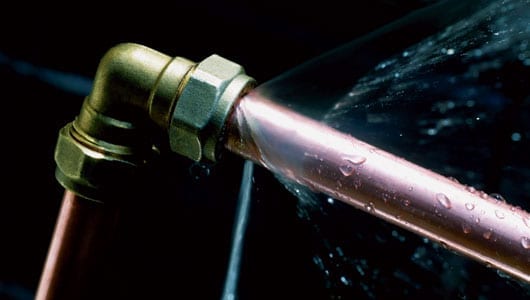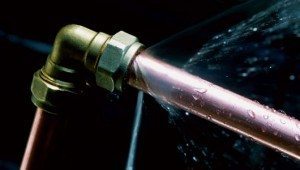
How to fix sources of water intrusion
 Use these tips to identify and fix five common sources of water intrusion.
Use these tips to identify and fix five common sources of water intrusion.
Problem: Plumbing plastic supply-line nuts cracked and split
Solution
Tighten plastic supply-line nuts by hand only to avoid sources of water intrusion. Using a wrench will create internal stress fractures and cause the nut to split days or months later.
“Just about any wrench or pliers puts enough torque on the nut that stress fractures will develop,” says Rose Grant, research architect with the State Farm Building Technology Research Unit, Bloomington, Ill. “Just get the nuts as tight as you can by hand.”
Problem: Sources of water intrusion around the chimney
Solution
Insert plywood crickets behind the chimney to divert water away. Peel the roof back, insert a cricket and cover valleys with peel-and-stick membrane. Install flashing where the cricket meets the chimney, weave tar paper over the existing tar paper, and then weave the shingles back into place.
Problem: The foundation leaks
The water supply line pipe buried in the yard has corroded and cracked, causing sources of water intrusion through the foundation wall at the point where the supply line enters the house.
Solution
Let the homeowner know that to stop the sources of water intrusion, the water-supply line must be replaced immediately. If you’re using copper pipe, embed it in a few inches of sand before you replace the soil.
“That allows the copper to expand and contract as the ground around the pipe cools down and warms up, and keeps rocks from damaging the pipe,” says Grant. If the soil is corrosive or has aggressive water flow, consider going with a plastic pipe such as ABS, CPVC or PEX instead of copper. Check the code to see what materials are acceptable in your area.
Problem: Improperly insulated pipes in an exterior wall freeze and burst, causing massive sources of water damage
Solution
Thaw and/or replace the pipe section. Find and caulk any cracks in the wall’s stud cavity (such as from an outside electrical box). Insulate the pipe well with dense insulation such as an R15 batting, making sure to insulate between the pipe and the exterior.
“This is one of the most common sources of water intrusion. At this point, the best thing would be to move that pipe into the heated part of the house,” says Huelman. “But if you can’t do that, proper insulation is a good solution.”
Problem: Roofing shingles are dented, punctured or shattered after a hail storm
“We tested more than 200 products in our lab, and all the things you’d think would make a shingle stand up well against hail—like being thick or expensive or having a good warranty—had nothing to do with it. It all has to do with how impact-resistant the product is,” says Grant.
Solution
Reshingle with impact-resistant shingles that have passed the UL-2218 Impact Test at Class 4. “Installing impact-resistant roofing materials can often get people a discount on their home insurance, especially in the central U.S.,” says Grant, “so recommending them will make the contractor look good in the homeowner’s eyes.”

